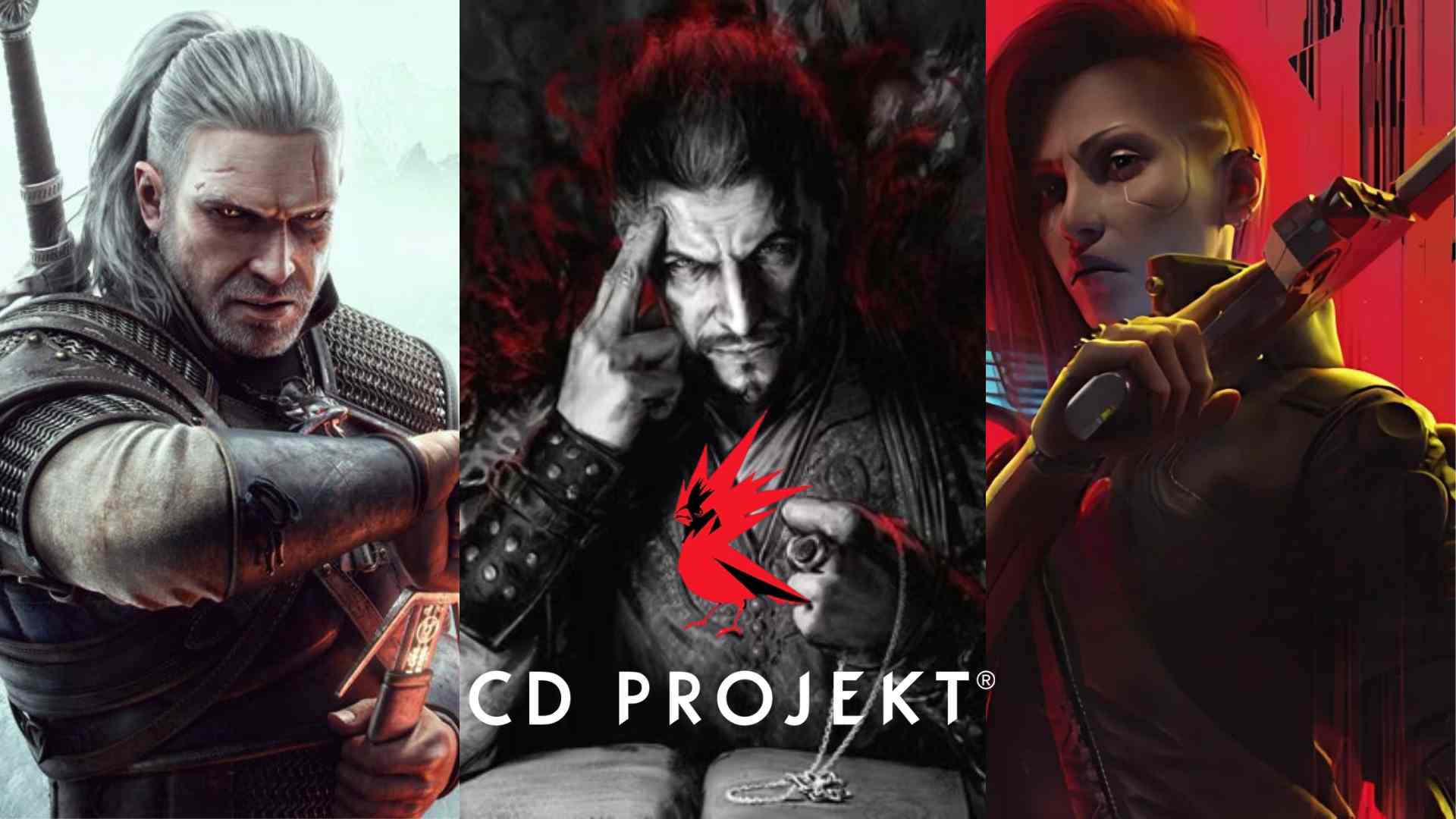CD Projekt Red Games have become synonymous with ambitious storytelling, groundbreaking visuals, and deep role-playing experiences. But how did a Polish game developer, once known for distributing games locally, rise to global fame? What led to the studio’s successes and stumbles in its journey through the complex world of game development?
In this detailed exploration from Gamespublisher.com, we’ll look into the full catalog of CD Projekt Red games. We’ll also examine how the studio evolved from localizing Western RPGs to becoming a global name among video game publishers and how it helped shape key video game genres in modern gaming history.
Whether you’re a casual gamer, a curious fan of game publishing, or someone following game developers for inspiration or investment, this guide delivers everything you need to know.
CD Projekt Red Games – A Brief History of the Studio
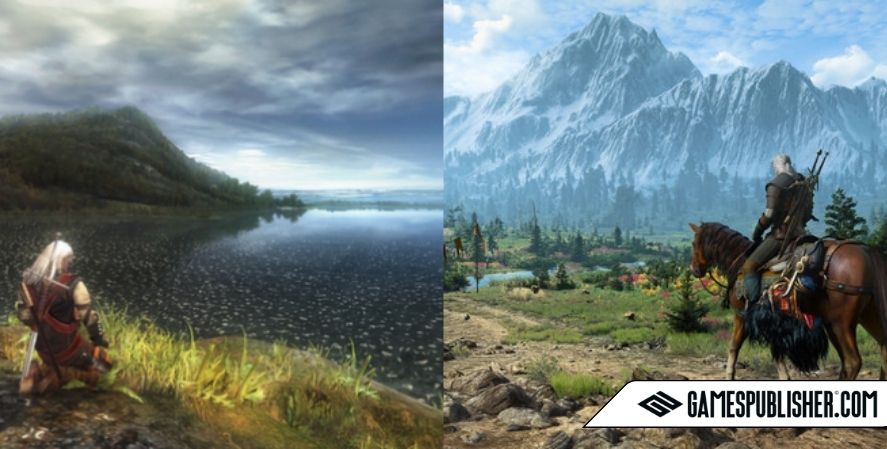
The story of CD Projekt Red is as remarkable as the games it creates. Before becoming the creators of world-renowned RPGs, CD Projekt was simply a Polish video game publisher established in 1994 by Marcin Iwiński and Michał Kiciński. The company started by importing and distributing Western games in Poland. Back then, the local gaming scene was small, and CD Projekt’s first success came through localization particularly the Polish version of Baldur’s Gate, a popular Dungeons & Dragons-inspired RPG.
This early experience with translating narrative-heavy titles helped lay the foundation for the company’s own design philosophy.
From Distributor to Developer
In 2002, CD Projekt established a development division CD Projekt Red to create its own games. Their goal was clear: build story-driven RPGs with high production value. They wanted to craft emotional stories that put player choice at the forefront.
And thus, in 2007, the first CD Projekt Red game, The Witcher, was released.
This transition from distribution to full-scale game development was not just ambitious. It was risky. Poland wasn’t known for global game hits, and RPGs were still a niche genre outside certain fanbases. However, CD Projekt Red doubled down on quality, storytelling, and worldbuilding values that would later define its legacy.
Today, people asking “what kind of company is CD Projekt Red” get more than a technical definition. It’s a game developer rooted in creativity, resilience, and constant reinvention.
CD Projekt Red Games – Full List of Published Titles
Let’s now walk through the complete catalog of games by CD Projekt Red, from their debut in 2007 to their most recent expansions. These titles span multiple platforms and showcase the studio’s growth and experimentation over the years.
| Year | Title | Platform(s) | Notes |
|---|---|---|---|
| 2007 | The Witcher | Windows | Enhanced Edition in 2008; Director’s Cut in 2009. |
| 2011 | The Witcher 2: Assassins of Kings | Windows, macOS, Linux, Xbox 360 | Enhanced Edition released in 2012 (added content and Xbox 360 port). |
| 2015 | The Witcher 3: Wild Hunt | Windows, PS4, Xbox One, Switch, PS5, Xbox Series X/S | Flagship open-world RPG. |
| 2018 | Thronebreaker: The Witcher Tales | Windows, PS4, Xbox One, Switch, iOS, Android | Single-player Witcher RPG built on Gwent mechanics. |
| 2020 | Cyberpunk 2077 | Windows, PS4, Xbox One, Stadia, PS5, Xbox Series X/S, macOS | Mainline Cyberpunk RPG. |
Expansions / Major DLC
| Year | Title | Platform(s) | Notes |
|---|---|---|---|
| 2015 | The Witcher 3: Hearts of Stone | Same as TW3 base | Story expansion. |
| 2016 | The Witcher 3: Blood and Wine | Same as TW3 base | Large story expansion. |
| 2023 | Cyberpunk 2077: Phantom Liberty | Windows, PS5, Xbox Series X/S | Major expansion. |
Standalone spin-offs and card games (CDPR)
| Year | Title | Platform(s) | Notes |
|---|---|---|---|
| 2014 | The Witcher Adventure Game | Windows, macOS, iOS, Android | Digital board-game adaptation. |
| 2015 | The Witcher Battle Arena | Android, iOS, Windows Phone | Mobile MOBA; servers closed in 2015. |
| 2018 | Gwent: The Witcher Card Game | Windows, PS4, Xbox One, iOS, Android, macOS | Full release in Oct–Dec 2018; console support ended in 2020. |
| 2022 | Gwent: Rogue Mage | Windows, iOS, Android | Single-player roguelike deckbuilder spin-off. |
| 2022 | Roach Race | iOS, Android | Endless-runner made by CDPR with Crunching Koalas; also an arcade minigame in Cyberpunk 2077. |
CD PROJEKT group mobile (subsidiary)
| Year | Title | Platform(s) | Notes |
|---|---|---|---|
| 2021 | The Witcher: Monster Slayer | iOS, Android | Developed and published by Spokko, a CD PROJEKT group studio; shut down June 30, 2023. |
Note: GWENT: The Witcher Card Game exited beta in 2018 and has been retired on some platforms.
This timeline reflects how CD Projekt Red shifted between refining their core IP and experimenting with new formats and genres.
CD Projekt Red Games – The Witcher Franchise
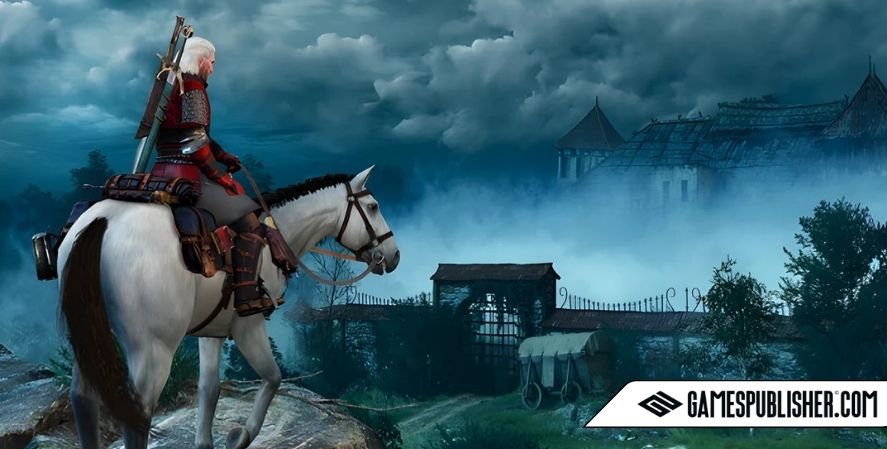
The Witcher franchise is the crown jewel of CD Projekt Red games. It’s not just a best-selling series it helped redefine what open-world RPGs could achieve in terms of storytelling, moral complexity, and quest design. Let’s look at how the series evolved.
The Witcher (2007) and Enhanced Edition
The studio’s debut game, The Witcher, introduced players to Geralt of Rivia, a monster hunter navigating a morally ambiguous world. Based on the books by Andrzej Sapkowski, the game was a modest commercial success. More importantly, it established the studio’s focus on strong narratives and player choice.
Gameplay-wise, the original title had an unusual real-time combat system that was a bit clunky. However, what drew attention was the depth of its storytelling and choices that had lasting consequences.
When CD Projekt Red released The Witcher: Enhanced Edition in 2008, they addressed many technical issues, added voiceovers, improved animations, and gave fans a cleaner, more immersive experience.
This first title showed the potential of CD Projekt Red as a game developer with a long-term vision.
The Witcher 2: Assassins of Kings
In 2011, the studio released The Witcher 2: Assassins of Kings. With this title, CD Projekt Red games took a significant step forward. The visuals improved drastically, and the political narrative was even more engaging than before.
The game featured branching storylines that led to entirely different second halves of the game, making player choice more impactful than in most game genres at the time. It gained attention from both players and critics, particularly for its mature storytelling.
This entry also marked the beginning of CD Projekt Red’s relationship with consoles, launching on Xbox 360 in addition to PC.
The Enhanced Edition in 2012 improved combat mechanics and added missions, helping broaden its reach among gaming audiences.
The Witcher 3: Wild Hunt and Expansions
Released in 2015, The Witcher 3: Wild Hunt wasn’t just a hit. It became a cultural phenomenon and a benchmark for modern RPGs. With over 50 million copies sold, it remains one of the most successful CD Projekt Red games ever made.
Key achievements include:
- An expansive, living open world filled with dynamic quests
- Deep character arcs and relationships
- A main story that remained grounded while tackling massive themes
- A soundtrack and visual style that captured a unique atmosphere
Notably, The Witcher 3 won over 250 Game of the Year awards and set a new standard for open-world storytelling.
The two expansions Hearts of Stone and Blood and Wine weren’t afterthoughts. In fact, Blood and Wine was praised as nearly a full game in its own right, featuring a new region, story arcs, and monsters.
This was also the point when fans started asking: “the witcher 4 cd projekt red when is it coming?”
It’s no exaggeration to say The Witcher 3 reshaped the RPG space and helped secure CDPR’s place among elite game publishers and game developers worldwide.
CD Projekt Red Games – Cyberpunk 2077 and Its Redemption Arc
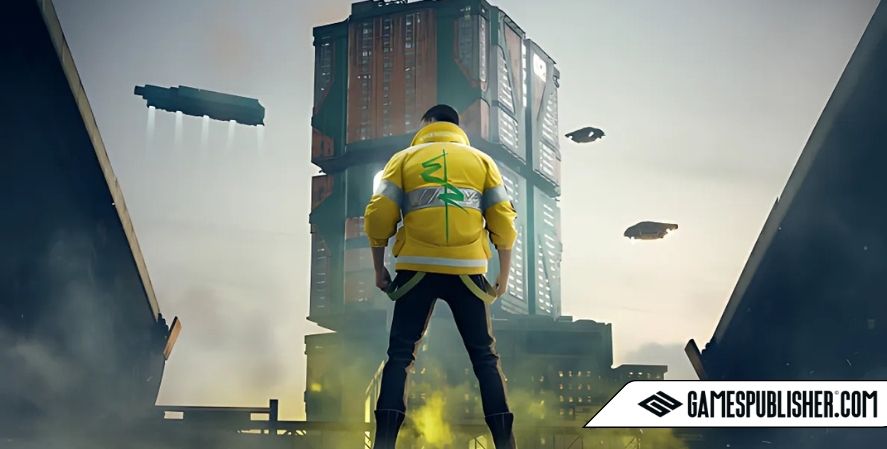
When CD Projekt Red released Cyberpunk 2077 in December 2020, expectations were sky-high. The marketing push was immense. The game promised a dynamic open-world city, branching storylines, and a detailed sci-fi universe. However, upon launch, it became one of the most controversial releases in recent gaming history.
The Hype and Launch Controversy
The hype leading up to Cyberpunk 2077 was massive, in part due to the studio’s past success with The Witcher 3. For years, CD Projekt Red showcased trailers, feature videos, and developer breakdowns. The studio even brought on Keanu Reeves to play a major character, Johnny Silverhand.
However, once the game launched, it quickly became clear that many of those promises hadn’t been met at least not fully.
- On older consoles, the game was nearly unplayable due to bugs and poor performance.
- Quest-breaking glitches, graphical issues, and crashes led to widespread refunds.
- Sony even pulled the game from the PlayStation Store temporarily, which was nearly unheard of for a AAA title.
The backlash was immediate. Class-action lawsuits followed, and CD Projekt Red’s stock value plummeted. For a while, fans and investors alike questioned the future of the company.
Despite these issues, the game’s strong writing, character arcs, and world design hinted at a deeper potential. Players could still appreciate its strengths when it worked.
This period tested the studio’s credibility more than any other moment in its history.
Updates, Fixes, and Phantom Liberty
Instead of abandoning the game, CD Projekt Red chose a different path. Over the next three years, the studio rolled out patch after patch. Each update fixed hundreds of bugs, optimized systems, and improved mechanics.
- Patch 1.5 introduced AI tweaks, visual upgrades, and gameplay adjustments.
- Patch 2.0 overhauled core systems, including perks, enemy behavior, and police response.
The real turning point came with the release of Cyberpunk 2077: Phantom Liberty in 2023. This expansion added a new district, new quests, new systems, and a spy-thriller storyline praised for its depth and performance.
Critics and fans widely praised Phantom Liberty, calling it the version of Cyberpunk that should have launched from the beginning.
Thanks to these efforts, Cyberpunk 2077 transformed from a cautionary tale into a respected RPG. It was a major redemption arc not just for the game, but for CD Projekt Red as a game developer.
CD Projekt Red Games – Spin-offs and Experimental Titles
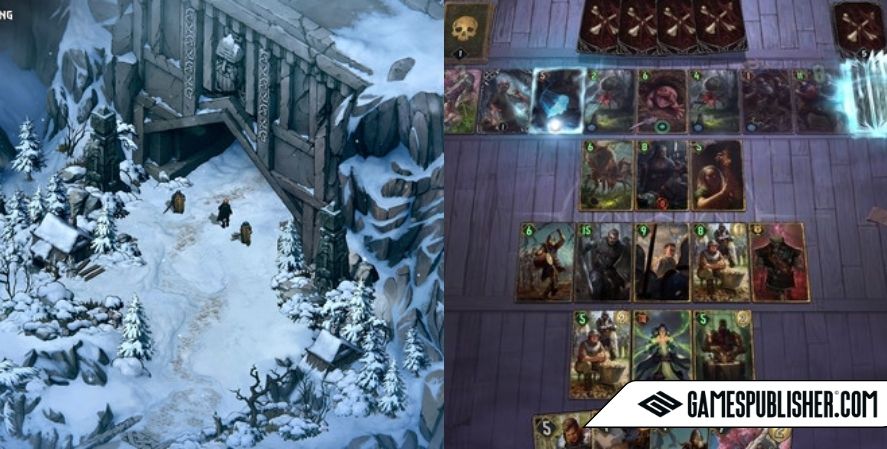
While The Witcher and Cyberpunk are the studio’s flagship franchises, CD Projekt Red has also ventured into smaller, more experimental titles. These spin-offs helped the studio explore new game genres and broaden its reach.
GWENT: The Witcher Card Game
Originally, GWENT was just a mini-game in The Witcher 3. However, it gained such popularity that the studio decided to turn it into a standalone competitive card game.
Launched in beta in 2015, and officially released in 2018, GWENT: The Witcher Card Game was available on PC, consoles, and mobile devices. It featured online multiplayer, seasonal events, and evolving meta strategies.
Though its popularity eventually waned, the game was praised for its polish, design, and balance.
GWENT also showed that CD Projekt Red wasn’t afraid to step outside its comfort zone. By entering the world of competitive online play, the studio proved it could compete beyond narrative RPGs.
Thronebreaker: The Witcher Tales
If GWENT focused on multiplayer, Thronebreaker: The Witcher Tales brought the card battle mechanics into a single-player RPG format. Released in 2018, this game blended narrative storytelling with deck-building gameplay.
Players controlled Queen Meve of Lyria, a new protagonist in the Witcher universe. Through exploration, dialogue, and card-based battles, the story unfolded in unexpected and impactful ways.
Though not a blockbuster in sales, Thronebreaker was a critical success and built a dedicated fanbase. It demonstrated that CD Projekt Red games could be both experimental and emotionally engaging.
CD Projekt Red Games – Upcoming Titles and Future Roadmap
With its past well established, CD Projekt Red is now preparing for its next phase. The studio has several new projects in development, which suggest an even larger ambition for the future.
The Witcher: Polaris (New Trilogy)
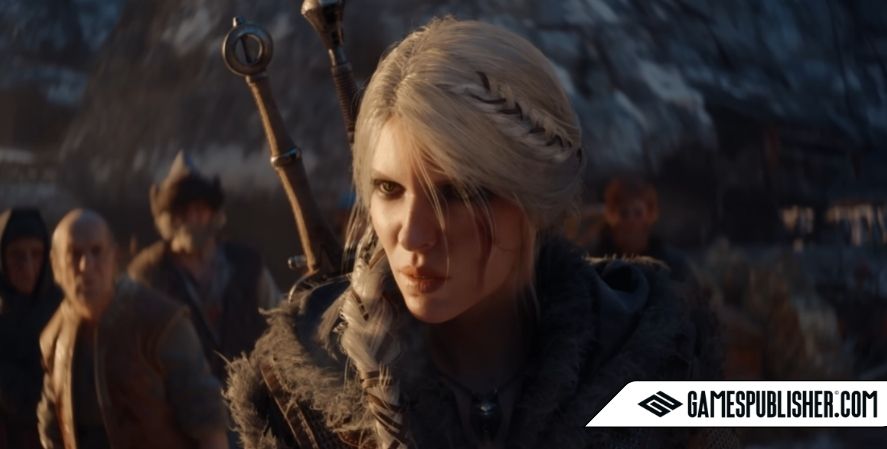
CD Projekt Red has officially announced a brand-new Witcher trilogy, starting with Project Polaris. This game is being developed in Unreal Engine 5, a major shift from their in-house REDengine.
Key goals for this trilogy include:
- A fresh narrative arc not centered on Geralt
- Expanded world design and environmental systems
- Faster development cycles for the trilogy’s sequels
Fans asking about the witcher 4 cd projekt red will find their answer in Polaris. Though it’s not technically titled “The Witcher 4,” it serves as the franchise’s next big step.
Cyberpunk Sequel – Project Orion
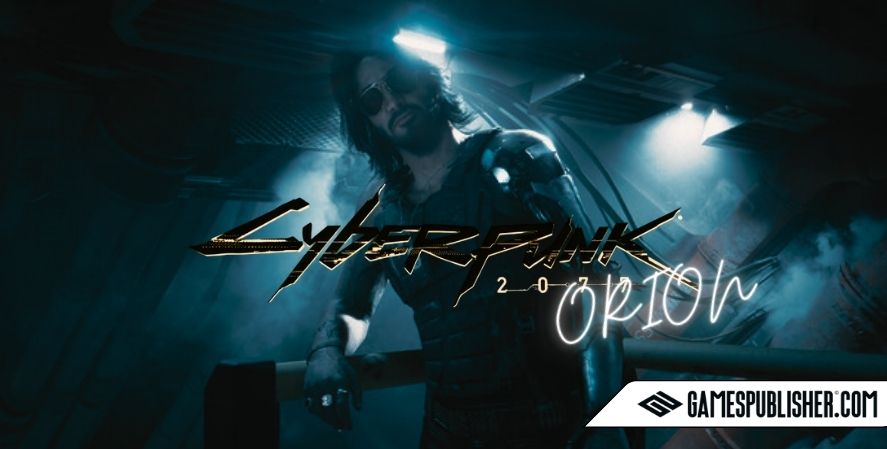
Even after its rocky start, Cyberpunk 2077 has built a strong enough base to justify a full sequel.
Project Orion, currently in pre-production, aims to take the franchise to the next level. CD Projekt Red has stated the sequel will emphasize:
- Advanced AI systems
- Deeper player immersion
- More responsive world behavior
- Next-gen technology throughout development
Though little is known beyond this, Project Orion signals the studio’s long-term commitment to the Cyberpunk universe.
Project Hadar – New Original IP
For the first time in its history, CD Projekt Red is developing a completely original IP. Project Hadar will be their first universe not based on pre-existing lore or adaptations.
According to the company, Hadar has been in conceptual stages since 2021. While details are scarce, it represents an important milestone for the studio’s creative independence.
This move could elevate CDPR from a top-tier game developer to a broader creative force among global video game publishers.
CD Projekt Red Games – Development Philosophy and Technology
Part of what makes CD Projekt Red games unique is the way they’re built. The studio places strong emphasis on storytelling, consequence, and immersion.
REDengine and Transition to Unreal Engine
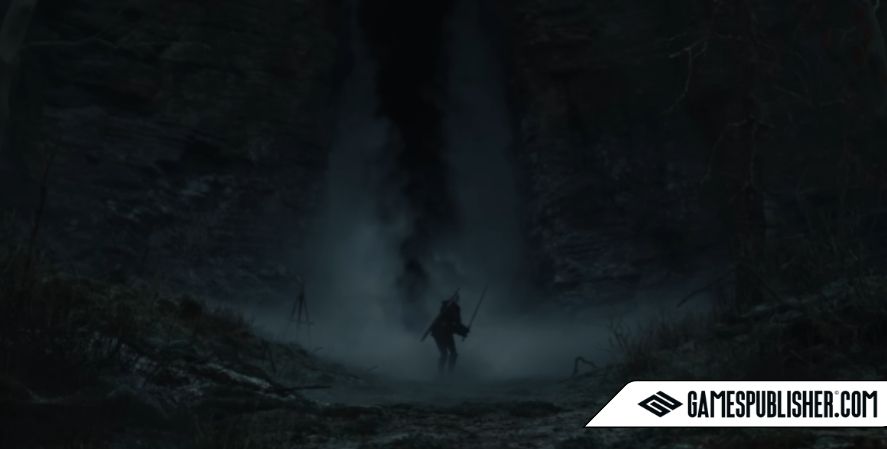
For years, CD Projekt Red used their in-house REDengine. It powered The Witcher 2, The Witcher 3, and Cyberpunk 2077. While flexible, it became increasingly difficult to maintain as projects grew in size.
In 2022, the studio announced it would switch to Unreal Engine 5, starting with Project Polaris. This change aims to reduce development friction, speed up prototyping, and create better cross-platform consistency.
With Unreal, CDPR can now tap into a large toolset supported by Epic Games and the wider developer community.
Quest Design and Player Choice
Another hallmark of CD Projekt Red games is the design of meaningful choices. Unlike many RPGs where decisions only change dialogue, CDPR games often deliver real consequences.
- In The Witcher 2, entire acts of the game change based on early choices.
- In The Witcher 3, character arcs and endings shift depending on player behavior.
- In Cyberpunk 2077, multiple endings reflect both dialogue and side quest involvement.
This emphasis on narrative complexity has influenced other game developers, especially in the RPG space.
CD Projekt Red Games – Business Strategy and Publishing
As CD Projekt Red grew, so did its business ventures. Beyond game development, the studio now operates as a multi-pronged entity within the wider game publishing world.
GOG.com – The DRM-Free Marketplace
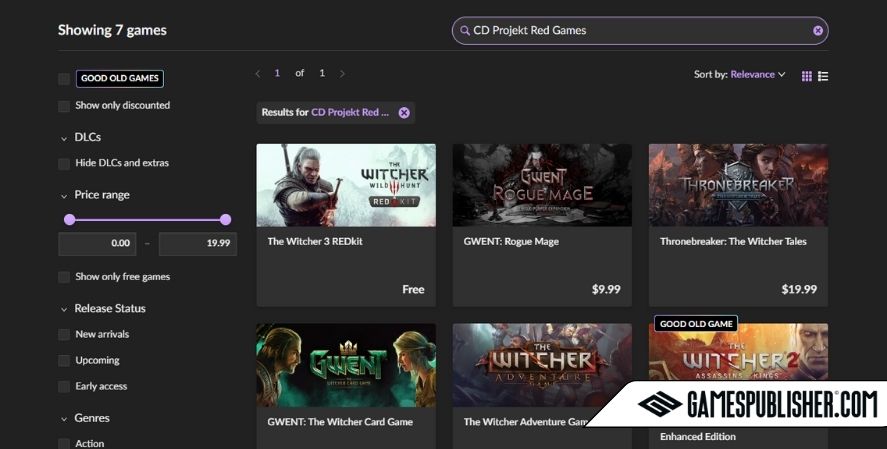
One of CD Projekt’s early successes was launching GOG.com (Good Old Games), a digital store that sells DRM-free titles. GOG has become a respected platform for classic and indie games alike.
It aligns with CDPR’s player-first philosophy by:
- Avoiding anti-piracy DRM software
- Offering money-back guarantees
- Providing mod support and community tools
By running GOG alongside its development arm, CD Projekt balances its identity as both a video game publisher and a service platform.
Transparency, Delays, and Investor Relations
Despite its creative success, CDPR has also learned hard lessons about project management. Delays and crunch reports during Cyberpunk 2077’s production damaged its reputation.
Following these events, the studio has pledged to improve internal conditions and increase transparency.
However, it still must balance fan expectations with shareholder demands. Many investors follow cd projekt red stock closely, especially when new titles are announced or delayed.
The company’s ability to rebuild trust after Cyberpunk’s launch illustrates the importance of communication in modern game publishing.
CD Projekt Red Games – Impact on the Industry
CD Projekt Red isn’t just a game studio. It’s a symbol of what’s possible when passion meets perseverance.
Influence on Open World and Narrative Design
Many developers credit The Witcher 3 as a turning point in open-world storytelling. Its seamless blending of side quests, moral dilemmas, and exploration set a high bar for future games.
Titles like Horizon: Zero Dawn, Assassin’s Creed: Origins, and Elden Ring have all taken cues from CDPR’s design choices.
Community Engagement and Mod Support
Unlike some studios, CD Projekt Red has embraced the modding community. It released tools like ModKit and REDmod to support player creations.
This openness has helped keep its games alive years after launch, especially for The Witcher 3. Mods continue to enhance graphics, gameplay, and add new story content.
The studio’s focus on community also shows up in:
- Developer Q&As
- Behind-the-scenes videos
- User feedback integration
It’s this dialogue that helps CDPR maintain a strong fanbase even through tough periods.
Conclusion
The journey of CD Projekt Red games is one of ambition, failure, redemption, and innovation. From their early days as a local distributor to becoming a globally recognized game developer, the studio has left a deep mark on the gaming landscape.
Their work continues to influence modern game development, challenge narrative conventions, and inspire both fans and developers around the world.
Looking forward, with projects like Polaris, Orion, and Hadar, CD Projekt Red is poised to redefine what storytelling in video games can be once again.
To stay updated on more industry deep-dives, publisher profiles, and behind-the-scenes reports, follow Gamespublisher.com — your trusted source for everything in game publishing and development.
Loading survey...

